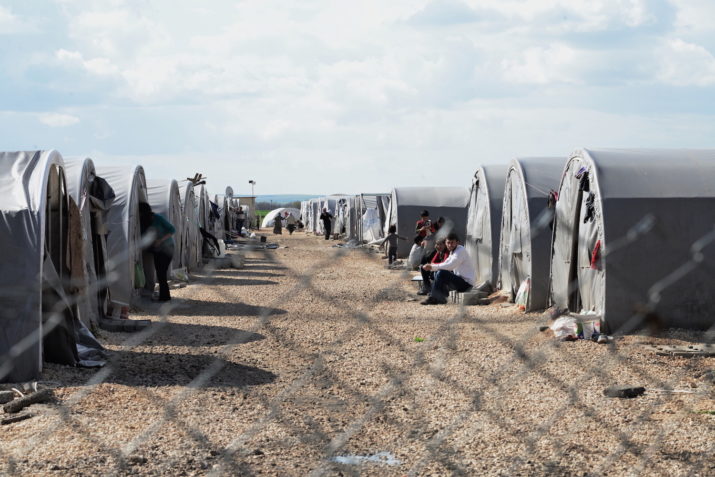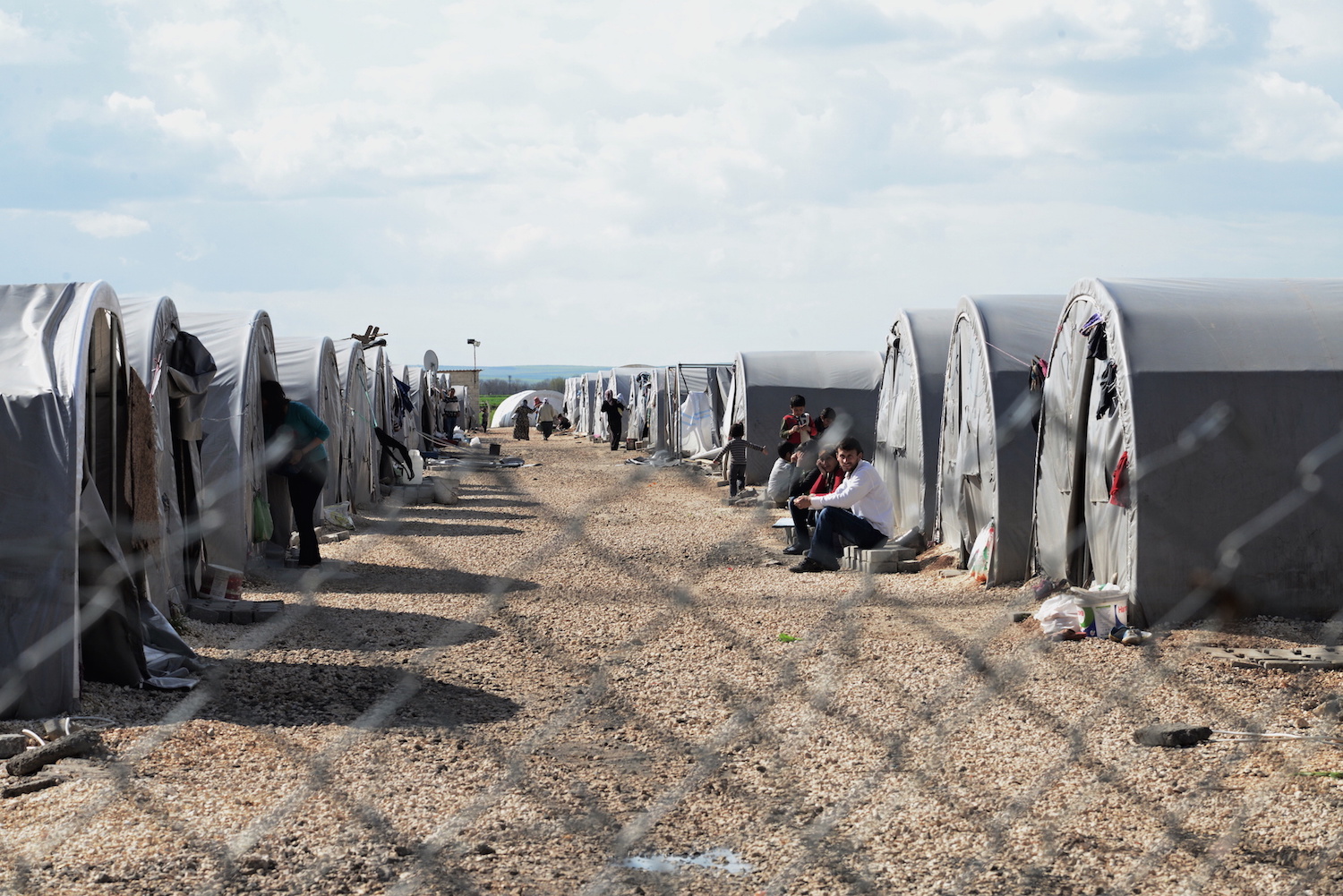

This is part of our special feature Governing the Migration Crisis.
The arrival of over one million migrants to Europe in 2015 (IOM 2015) was projected by some political circles as a crisis of borders, and as a result, perceived by some as a situation too large to cope with. Europe’s rapid response capacity in the field of migration had already been put under a serious test not so long ago: in 2011, there was a sudden arrival of immigrants and refugees to Europe in the imminent aftermath of the so-called Arab Spring, which resulted also in the collapse of the border control and police system in Tunisia and Libya. Yet, the situation has become dire since the summer of 2015 as the Syrian civil war left its fourth year behind, increasing the number of Syrians who would like to reach Europe.
Currently, Europe is facing the largest humanitarian disaster since the end of World War II. Even though the European governments, in an attempt to address public feelings of insecurity about immigration, seek to project themselves as able to manage international migration effectively, the objectives and outcomes of their immigration and border control policies do not always overlap. The unpredictable nature of migration pressures, together with the existence of various international constraints and the involvement of actors at different levels with different immigration interests, render their policy outputs dramatically at odds with their expressed policy priorities in the field. Hence, even though there has been a growing emphasis on border security in Europe’s migration policy-making landscape, this approach has turned out to be highly counter-productive. Stricter border controls have resulted in the further tightening of legal entry routes for those who want to reach Europe, and, unintentionally bolster human smuggling where those who would like to reach to Europe take highly perilous journeys and sometimes pay the ultimate price with their lives.
This piece analyzes how the EU and its Member States have been responding to immigrant and asylum-seeker arrivals since the intensification of the humanitarian crisis in the summer of 2015. It seeks to contribute to two current debates with respect to European migration management: (1) that recent developments in European migration management represent a profound spatial and organizational reconfiguration of the regional governance of migration, and (2) evidence of a trend towards the externalization or subcontracting of migration control.
Externalization of the EU Border Controls
As international migration turned into a fiercely debated issue within the frame of domestic politics in Europe, efforts to control it also increased. Even though the southern Mediterranean and the Middle East had already been areas of policy interest for the Europe’s states “since the early 1970s and had been the target of these states” coordinated policy efforts, it was only in the 1990s that such efforts were translated into an overarching policy framework with the launch of the Euro-Mediterranean Partnership (EMP) and the European Neighbourhood Policy (ENP)’,which also sowed the seeds for an institutional setting that would foster the externalization of Europe’s border controls in the long term (Cetin 2017).
Since these earlier policy initiatives, the EU’s efforts to externalize border controls has been intensified in line with the perceived insufficiency of domestic and EU-level policies to deal with migration pressures (Boswell 2003). While externalization is a rather broadly defined concept, it is used here to signify the EU’s attempt to project its territorial borders onto surrounding states and regions by exporting its migration and asylum policies (Paoletti 2011: 29).
Externalized policies started to be introduced in the intergovernmental phase of European migration policy and have become Europeanized in nature. They are also increasingly more wide-ranging in nature and scope, encompassing “pre-frontier” controls, such as carrier sanctions, visa regimes, and the practice of patrolling international waters so as to prevent migrants reaching EU territories.
The outsourcing of the EU and the Member States’ immigration control policies also rely heavily on surveillance and the use of border control technologies in cooperation with the partnering countries. While the use of new border security measures is giving a new meaning to the borders of Europe by transforming static physical frontiers, the potential human rights implications and also social costs of the use of such means are debatable.
Yet, the use of risk profiling methods, for instance, is quite questionable and the criteria used to identify who should be considered “risky” and who should be welcomed in as “profitable” and “trustable” are far from being clear. Even though, there might be a certain need to keep things in “secret” in order to ensure the successful operation of the such technology-based surveillance schemes, the categorizations of “risky” and “trusted” travelers have also the worrying potential of exacerbating prejudices towards particular national, ethnic and religious groups.
Attempts to Subcontract Migration Controls: EU-Turkey ‘Refugee Deal’ as a Case Study
Turkey, as Europe’s most southern and eastern outpost, has long been both a destination country for migrants and refugees, and a major point of departure for people aspiring to move to the EU. Yet, despite its geographical proximity to the EU area and its key positioning in terms of refugee and immigrant movements in the direction of Europe, the EU has long adopted a reluctant approach in terms of providing any substantial material support to Turkey. Since the first Syrian refugees started arriving to Turkey, The Turkish Red Crescent and the Prime Minister’s Disaster and Emergency Management Directorate (AFAD) have been playing an active role in terms of providing food, shelter, education (including access to universities) and basic medical services to Syrians. The cost of this aid by Turkish agencies amounted to €1 billion (Hürriyet Newspaper, March 12, 2013); putting it in a stark contrast with the EU spending in the same area which was €313 million by December 2012 – a third of what Turkey had spent- “of which only €25 million went to Turkey to cover a meagre 2.5 percent of its total costs”(Delegation of the European Union to Turkey, December 24, 2012, cited in Düvell 2013: 279).
Against this backdrop, the conclusion of the so-called EU-Turkey refugee deal on March 18, 2016, which came into effect on March 20, 2016, triggered a heavy public debate regarding the compatibility of the deal with the EU norms and legislation together with its applicability in the long-run.
The origin of the recently signed EU-Turkey action plan goes back to the EU-Turkey working dinner on 17 May 2015 and the informal meeting of the EU Heads of State or Government on 23 September 2015 where EU leaders called for a reinforced dialogue with Turkey at all levels. The Draft Action Plan was handed over by the by European Commission President Juncker to the President of the Republic of Turkey Erdoğan on 5 October 2015. It tries to address the current crisis situation in three ways:
- by addressing the root causes leading to the massive influx of Syrians;
- by supporting Syrians under temporary protection and their host communities in Turkey;
- and by strengthening cooperation to prevent irregular migration flows to the EU.
The document puts emphasis on the spirit of burden sharing and identifies a certain set of actions to be implemented simultaneously by Turkey and the EU. The implementation of the Action Plan is jointly steered and overseen by the European Commission and the High Representative/ Vice President and the Turkish government through the establishment of the EU-Turkey high-level working group on migration (European Commission 2015).
The so-called Turkey-EU action plan is part of a broader EU initiative to support countries where most of the Syrian migrants have been hosted. So, the plan also foresees that the EU will “continue providing assistance, over and beyond the 4.2 EUR billion, which has been already mobilized by the EU, to Syrian refugees hosted in Lebanon, Jordan and Iraq, as well as to Syrians displaced within Syria with the aim to contribute, inter alia, to the weakening of push factors forcing them to move towards Turkey” (European Commission 2015).
Regarding the achievement of the other key goal, which is “strengthening cooperation to prevent irregular migration,” the EU intends to provide aid that will help strengthen Turkey’s border control and surveillance mechanisms, such as enhancing information exchanges with Turkey on combating smuggling networks by deploying a FRONTEX liaison officer to Turkey, or ‘providing financial assistance offered to support Turkey for it to enhancing its capacities for a well-functioning asylum, migration, visa and border management system in line with the EU-Turkey visa dialogue (European Commission 2015).
Another EU priority involved in the plan is achieving better cooperation with Turkey against irregular migration from third countries/ countries of origin of irregular migrants, in the form of joint return operations, including reintegration measures. The particular EU countries that Turkey is expected to step up cooperation are Bulgaria and Greece with the aim to prevent irregular migration across the common land borders. For that to happen, the importance of effective implementation of the tri-partite agreement signed in May 2015 establishing a common center in Capitan Andreevo is underlined (European Commission 2015). On this point, the key EU expectation is the accelerated readmission of irregular migrants by Turkey who reached to Europe via Turkey but are not in need of international protection.
The EU-Turkey deal, which says that ‘for every Syrian migrant sent back to Turkey, one Syrian already in Turkey will be resettled in the EU’ (BBC News March 20, 2016) however, is far from being a long term solution. As Merkel herself also stated “You can only reduce the number of refugees as a result of joint action with Turkey, Greece and the EU; you have to tackle the causes” (Reuters October 27, 2015). Moreover, it is vulnerable both to European resistance over visa liberalization, and to criticisms of its implications for the human rights of refugees. While the European Union position significantly shifted from rhetoric about creating “a large-scale mechanism to ship back irregular migrants arriving in Greece to Turkey” (Tusk 2016), to an assessment process respecting the asylum rights of each individual reaching Greece, concerns are still looming over the implementation of the deal. The speed and unchartered nature of the implementation may mean rules are set aside in favor of expediency. Some of the observers accused the deal as an attempt on the side of the EU to push the migrant problem beyond its boundaries so that “the EU leaders can pretend it’s not there” (Malik 2015).
Additionally, Turkey has its own issues and has been suffering from political volatility which can, again, complicate the implementation of the deal. Turkey is already suffering from a rising unemployment rate, and there is unrest among the native labor force about the risk of losing their jobs to Syrians. The potential political repercussions are even more worrying. Certain circles within Turkish society believe that Syrians who originally escaped from the Assad regime are actually quite sympathetic towards Erdoğan (Kuzu 2015). This can have implications for the supporters of the Turkish president– or even people perceived to support him, as Turkish society is currently deeply polarized creating strong opposing camps almost on any issue.
Conclusion
Migration sits at the center of a nexus of very difficult issues in Europe, not least the overlap and public confusion between refugee policy, internal freedom of movement and the needs of counter-terrorism. Clearer distinctions between these logics have to be made but the EU and its Member States should also need to consider what their obligations in the field of migration entail. This means in practice facing responsibilities both for imperialism and for recent military fiascos, even if this in turn will generate divisions among the Member States themselves, given their varied past records.
Clearly the aim must be to come over ineffective and inefficient management of immigrant and refugee arrivals. Yet a long-term ‘solution’ is difficult to imagine to what Europeans, but not necessarily other regions, perceive of as a crisis. There is a long-term structural problem of migratory pressure towards richer areas of the world and towards the EU in particular, given its geographical accessibility from North Africa, the Middle East, and Ukraine. The civil wars in Syria and Libya are making this a current priority but the pressure will not disappear even with peace. International criminal circuits will persistently exploit the human needs of migrants.
So far European diplomacy has been haphazard, and driven by Chancellor Merkel’s personal initiatives. In terms of its rapid response capacity, despite the urgent need for some change, in the field of migration and asylum, the EU and its Member States seem to be stuck with their old game and still depict hesitant positions.
In order to break this vicious circle, at least to a certain extent, foreign ministers, and the EU Foreign Affairs Council, need to be much more visibly involved – so as to focus on the issues of returns, safe countries, and the targeted use of development assistance to help potential economic migrants to see their future at home. Ending the tragic wars in Syria and Libya is vital, for humanitarian reasons but also to defuse the geopolitical crises across the European and Arab worlds. There are clear limits to European influence here, but that does not mean that fatalism and inaction should be the order of the day.
Apart from that, it is becoming highly obvious that the Schengen system is expiring. It should be acknowledged that this is a set of issues for the long haul, which requires carefully thought-through policies, not rhetoric. It will also require more investment than Europe have so far been willing to allocate. Member States need to decide what they want from it, or from an adapted version, otherwise events will decide for them.
Elif Çetin (PhD, Cantab) is a Junior Research Fellow at Wolfson College, University of Cambridge and a Research Associate at the Von Hügel Institute, St Edmund’s College, University of Cambridge, working on policies and politics of immigration control in Europe.
Photo: A refugee camp in Suruc, Turkey, Procyk Radek | Shutterstock
References:
BBC News. 2016. ‘Migrant crisis: EU-Turkey deal comes into effect.’ Anonymous, March 20, available at <http://www.bbc.co.uk/news/world-europe-35854413>, last accessed February 13, 2017.
Boswell, Christina. 2003. ‘The “external” dimension of EU immigration and asylum policies.’ International Affairs 79 (3): 619-638.Cetin, Elif. 2017. ‘Migration in the Euro-Mediterranean Area: Lampedusa and beyond.’ In Migration in the Western Mediterranean: Space, Mobility and Borders, edited by Laure-Anne Bernes, Hassan Bousetta, and Caroline Zickgraf. Abingdon, UK and New York, NY: Routledge.
Düvell, Franck. 2013. ‘Turkey, the Syrian Refugee Crisis and the Changing Dynamics of Transit Migration.’ The European Institute of the Mediterranean (IEMED) Yearbook, 278-281, available at <http://www.iemed.org/observatori/arees-danalisi/arxius-adjunts/anuari/iemed-2013/Duvell%20Turkey%20Syrian%20Refugees%20EN.pdf>, last accessed February 13, 2017.
European Commission. 2015. Draft Action Plan: Stepping up EU-Turkey cooperation on support of refugees and migration management in view of the situation in Syria and Iraq. Brussels, available at <europa.eu/rapid/press-release_MEMO-15-5777_en.pdf>, last accessed February 12, 2017.
Kuzu, Durukan. 2015. ‘Turkey is buying its way into the EU with a deal that won’t solve the refugee crisis.’ The Conversation, October 19, available at https://theconversation.com/turkey-is-buying-its-way-into-the-eu-with-a-deal-that-wont-solve-the-refugee-crisis-49331, last accessed February 4, 2017.
Paoletti, Emanuela. 2011. The Migration of Power and North–South Inequalities: The Case of Italy and Libya. London: Palgrave Macmillan.
Malik, Kenan. 2015. ‘The EU’s stinking refugee deal with Turkey.’ Al Jazeera, October 27, available at <http://www.aljazeera.com/indepth/opinion/2015/10/eu-stinking-refugee-deal-turkey-151026093515679.html>, last accessed February 12, 2017.
Reuters UK. 2015. ‘Bavarian leader criticizes Austria and Merkel over refugees.’ Anonymous October 27, available at http://uk.reuters.com/article/uk-europe-migrants-germany-idUKKCN0SL1F420151027, last accessed February 2, 2017.
Tusk, Donald. March 7, 2016, quoted in European Parliament Briefing March 2016, available at
<http://www.europarl.europa.eu/RegData/etudes/BRIE/2016/579323/EPRS_BRI(2016)579323_EN.pdf>, last accessed February 9, 2017.
Published on October 2, 2017.




